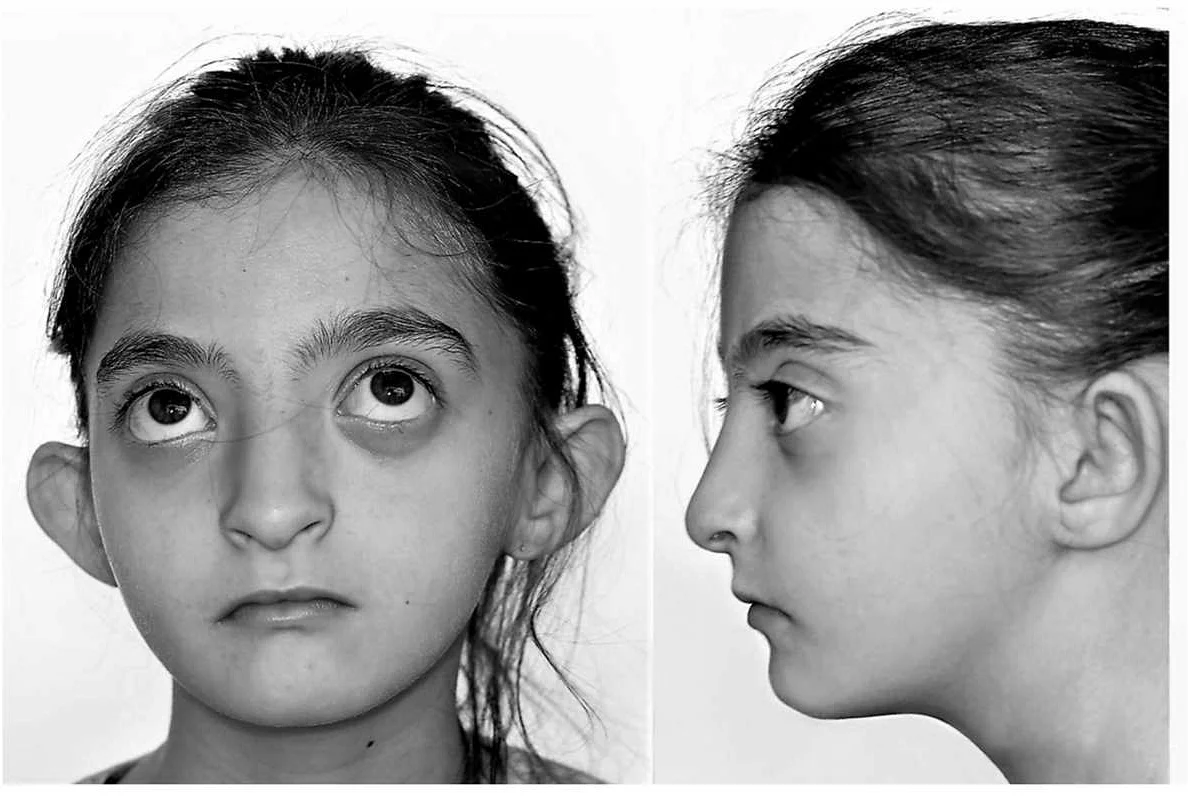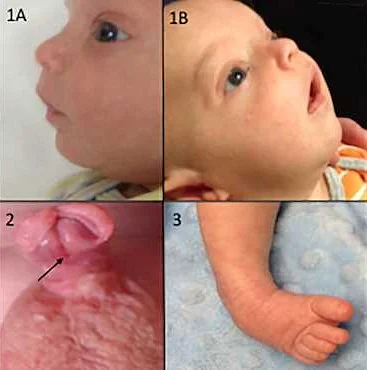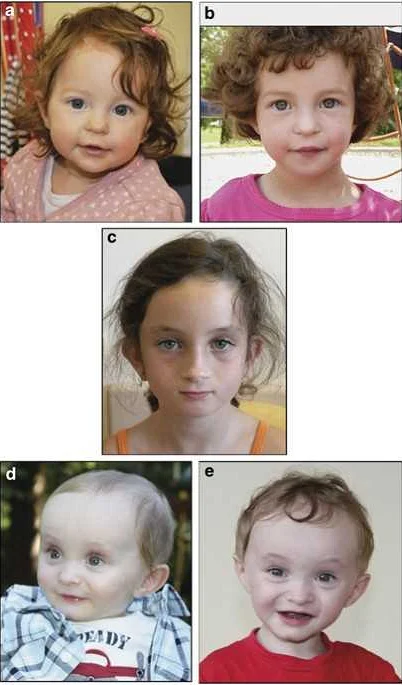Understanding the Dangers of Wolf-Hirschhorn Syndrome
Содержимое
- 1 Understanding the Dangers of Wolf-Hirschhorn Syndrome
- 1.1 Genetic Mutation Leads to Developmental Disorders
- 1.2 Severe Intellectual and Physical Disabilities
- 1.3 Distinctive Facial Features and Growth Delays
- 1.4 Common Health Issues in Individuals with Wolf-Hirschhorn Syndrome
- 1.5 Challenges in Diagnosis and Management of the Syndrome
- 1.6 Video on the topic:
Wolf-Hirschhorn syndrome is a rare genetic disorder characterized by developmental delays, intellectual disabilities, distinctive facial features, and various physical abnormalities. This syndrome can be dangerous due to potential life-threatening complications such as heart defects, seizures, respiratory issues, and kidney problems. Understanding the symptoms, causes, and potential risks associated with Wolf-Hirschhorn syndrome is crucial for effective diagnosis and management of this condition.
Wolf-Hirschhorn syndrome (WHS), also known as 4p deletion syndrome, is a rare genetic disorder that affects about 1 in 50,000 live births. It is caused by a deletion on the short arm of chromosome 4, resulting in various physical and developmental abnormalities. WHS is a complex condition that can have a significant impact on the affected individual’s health and quality of life.
One of the primary causes of Wolf-Hirschhorn syndrome is a spontaneous deletion of a portion of chromosome 4 during the formation of reproductive cells or early fetal development. In some cases, the deletion can be inherited from a parent who carries the chromosomal abnormality. However, most cases of WHS occur randomly, with no family history of the syndrome.
Individuals with Wolf-Hirschhorn syndrome often exhibit distinct physical features, including a characteristic facial appearance with a high forehead, wide-set eyes, a small chin, and a broad nasal bridge. They may also have heart defects, kidney problems, and difficulties with feeding and swallowing. Developmental delays and intellectual disabilities are common, with many individuals having severe to profound cognitive impairment.
The risks associated with Wolf-Hirschhorn syndrome vary depending on the severity of the symptoms and the presence of associated medical conditions. Some individuals with WHS may have a relatively mild form of the syndrome, while others may experience more severe health issues that require ongoing medical care and support. Early intervention and a multidisciplinary approach to treatment can help manage the symptoms and improve the overall well-being of individuals with WHS.
Genetic Mutation Leads to Developmental Disorders
Wolf-Hirschhorn syndrome (WHS) is a rare genetic disorder caused by a deletion of genetic material on a specific region of chromosome 4. This genetic mutation leads to a range of developmental disorders and physical abnormalities.
Individuals with WHS typically exhibit distinctive facial features, such as a high forehead, wide-set eyes, and a broad nasal bridge. They may also have intellectual disabilities, delayed growth and development, and seizures.
The exact cause of WHS is still not fully understood, but it is believed to be a sporadic genetic mutation that occurs randomly during the development of an egg or sperm.
It is important to note that WHS is a rare disorder, with an estimated incidence of 1 in 50,000 to 1 in 100,000 births. It does not discriminate based on race or gender and can occur in all ethnic groups.
While there is no cure for WHS, treatment focuses on managing the symptoms and providing support to individuals and their families. This may involve a multidisciplinary approach, including early intervention programs, physical therapy, speech therapy, and educational support.
Furthermore, genetic counseling can be beneficial for families affected by WHS. It can help individuals and their families understand the genetic basis of the disorder, assess the risk of recurrence in future pregnancies, and provide emotional support.
Overall, understanding the genetic mutation that leads to developmental disorders like WHS is crucial for early diagnosis, effective management, and support for affected individuals and their families.
Severe Intellectual and Physical Disabilities
Wolf-Hirschhorn Syndrome is characterized by severe intellectual and physical disabilities. Individuals with this syndrome often experience delays in reaching developmental milestones, such as sitting, crawling, and walking.
Intellectual disabilities range from mild to severe, but many individuals with Wolf-Hirschhorn Syndrome have profound intellectual impairment. They may have limited communication skills and struggle with understanding and processing information.
Physical disabilities associated with Wolf-Hirschhorn Syndrome include distinctive facial features, such as a high forehead, prominent glabella (area between the eyebrows), and a broad nasal bridge. Additionally, individuals may have a small head (microcephaly), a cleft lip or palate, and hearing loss.
Individuals with Wolf-Hirschhorn Syndrome may also have seizures, which can range from mild to severe. These seizures can further contribute to cognitive impairment and overall developmental delays.
Due to the severity of these intellectual and physical disabilities, individuals with Wolf-Hirschhorn Syndrome often require ongoing medical care and support from a variety of healthcare professionals. Early intervention and specialized therapies, such as physical therapy, occupational therapy, and speech therapy, can help improve functional abilities and quality of life for individuals with this syndrome.
It is important for caregivers and families to seek support and resources to ensure the best possible outcomes for individuals with Wolf-Hirschhorn Syndrome. This may include connecting with support groups, accessing educational resources, and advocating for appropriate medical and therapeutic interventions.
Overall, severe intellectual and physical disabilities are key characteristics of Wolf-Hirschhorn Syndrome, requiring comprehensive care and support to promote the well-being of affected individuals.
Distinctive Facial Features and Growth Delays

One of the primary characteristics of individuals with Wolf-Hirschhorn syndrome is the presence of distinctive facial features. These features include a high forehead, wide-set eyes, a prominent nose with a high nasal bridge, a small chin, and a “Greek warrior helmet” appearance. The facial features can vary in severity from person to person, but they are often a key diagnostic sign of the condition.
In addition to the facial features, individuals with Wolf-Hirschhorn syndrome typically experience delays in their overall growth and development. This can manifest as slow growth in infancy, resulting in smaller than average height and weight. Children with the syndrome may also experience delays in reaching developmental milestones such as sitting, standing, and walking.
It is important to note that the degree of growth delay can vary widely among individuals with Wolf-Hirschhorn syndrome. Some individuals may have only mild delays, while others may experience more significant growth impairments. Early intervention and ongoing medical care are crucial for monitoring and addressing these growth issues in individuals with the condition.
Common Health Issues in Individuals with Wolf-Hirschhorn Syndrome

Wolf-Hirschhorn Syndrome (WHS) is a rare genetic disorder caused by a deletion on the short arm of chromosome 4. This syndrome is characterized by a variety of physical and developmental impairments. Individuals with WHS are prone to experiencing several common health issues.
One of the most prevalent health issues in individuals with WHS is intellectual disability. The majority of people with WHS have moderate to severe cognitive impairments, which affect their ability to learn, communicate, and function independently.
Another common health issue in individuals with WHS is delayed growth and developmental milestones. Children with WHS often experience slow growth, both in terms of height and weight. They may also have delayed motor skills, such as sitting, walking, and talking.
Individuals with WHS also frequently have distinctive facial features, including a broad, flat nasal bridge, widely spaced eyes, a small chin, and a high forehead. These physical characteristics can vary in severity from person to person and may change with age.
Seizures are another health issue that individuals with WHS commonly face. About 90% of people with WHS experience recurrent seizures, which can range from mild to severe. Seizures can have a significant impact on an individual’s daily life and require ongoing medical management.
Additionally, individuals with WHS often have hearing and vision problems. They may experience hearing loss, which can range from mild to profound, and may require the use of hearing aids or other assistive devices. Vision problems, such as nearsightedness or crossed eyes, can also occur.
Other health issues that individuals with WHS may experience include heart defects, kidney problems, gastrointestinal issues, and respiratory infections. It is important for individuals with WHS to receive regular medical check-ups and ongoing care from a team of healthcare professionals.
Overall, individuals with Wolf-Hirschhorn Syndrome face a range of common health issues that require specialized medical attention and support. Early intervention and ongoing management can help improve their quality of life and address their unique needs.
Challenges in Diagnosis and Management of the Syndrome

Wolf-Hirschhorn Syndrome (WHS) presents several challenges in its diagnosis and management due to its complex nature.
Firstly, one of the primary challenges in diagnosing WHS is the variability in the presentation and severity of symptoms among individuals. The syndrome can manifest differently in each person, making it difficult to identify and diagnose. Some individuals may exhibit mild symptoms, while others may have severe developmental delays and physical abnormalities. This variability can lead to delays in diagnosis and hinder appropriate intervention and support.
Another challenge in diagnosing WHS is the lack of awareness among healthcare professionals. The syndrome is considered rare, affecting approximately 1 in 50,000 births. As a result, many doctors may not have encountered or received adequate education on WHS, leading to misdiagnosis or delayed diagnosis. Improved awareness and education about WHS are crucial for timely and accurate diagnosis.
Once diagnosed, managing WHS can be challenging due to the wide range of symptoms and associated medical conditions. Individuals with WHS often require a multidisciplinary approach involving various medical specialists, including geneticists, neurologists, cardiologists, and developmental pediatricians. Coordinating the care and interventions provided by different specialists can be complex and time-consuming, requiring close communication and collaboration among the healthcare team.
Furthermore, the management of WHS involves addressing the specific needs and challenges that arise throughout an individual’s lifespan. Early intervention therapies, such as physical, occupational, and speech therapy, are often necessary to optimize the individual’s development and functional abilities. Regular monitoring for associated medical conditions, such as heart defects and seizures, is also crucial to ensure proper management and timely intervention.
In conclusion, the diagnosis and management of Wolf-Hirschhorn Syndrome present several challenges due to the variability in symptoms, lack of awareness among healthcare professionals, and the need for a multidisciplinary approach. Increased awareness, timely diagnosis, and comprehensive care coordination are essential for providing individuals with WHS the best possible outcomes and quality of life.